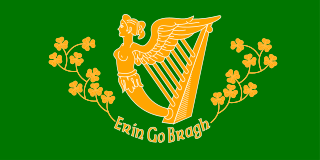The occult, in the broadest sense, is a category of esoteric supernatural beliefs and practices which generally fall outside the scope of organized religion and science, encompassing phenomena involving otherworldly agency, such as magic and mysticism and their varied spells. It can also refer to supernatural ideas like extra-sensory perception and parapsychology. Literally, the term simply means "hidden", and is used in this sense in astronomy, for example when a star is "occulted" by the moon, i.e. passes from view as the moon moves in front of it. In the sense of parapsychology, the same Latin root indicates that the phenomenon is "hidden" from the physical, bodily senses.

In the history of the United Kingdom and the British Empire, the Victorian era was the reign of Queen Victoria, from 20 June 1837 until her death on 22 January 1901. Slightly different definitions are sometimes used. The era followed the Georgian era and preceded the Edwardian era, and its later half overlaps with the first part of the Belle Époque era of continental Europe.

A pamphlet is an unbound book. Pamphlets may consist of a single sheet of paper that is printed on both sides and folded in half, in thirds, or in fourths, called a leaflet or it may consist of a few pages that are folded in half and saddle stapled at the crease to make a simple book.

A coat is typically an outer garment for the upper body, worn by either gender for warmth or fashion. Coats typically have long sleeves and are open down the front, and closing by means of buttons, zippers, hook-and-loop fasteners, toggles, a belt, or a combination of some of these. Other possible features include collars, shoulder straps, and hoods.

Erin go Bragh, sometimes Erin go Braugh, is the anglicisation of an Irish language phrase, Éirinn go Brách, and is used to express allegiance to Ireland. It is most often translated as "Ireland Forever."
The long nineteenth century is a term for the 125-year period beginning with the onset of the French Revolution in 1789, and ending with the outbreak of World War I in 1914. It was coined by Soviet writer Ilya Ehrenburg and later popularized by British Marxist historian Eric Hobsbawm. The term refers to the notion that the period reflects a progression of ideas which are characteristic to an understanding of the 19th century in Europe.

Beef bourguignon or bœuf bourguignon, also called beef Burgundy, and bœuf à la Bourguignonne, is a French beef stew braised in red wine, often red Burgundy, and beef stock, typically flavored with carrots, onions, garlic, and a bouquet garni, and garnished with pearl onions, mushrooms, and bacon. A similar dish using a piece of braised beef with the same garnish is pièce de bœuf à la bourguignonne.

Egyptomania refers to a period of renewed interest in the culture of ancient Egypt sparked by Napoleon's Egyptian Campaign in the 19th century. Napoleon was accompanied by many scientists and scholars during this campaign, which led to a large interest in the documentation of ancient monuments in Egypt. Thorough documentation of ancient ruins led to an increase in the interest about ancient Egypt. In 1822, Jean-François Champollion deciphered the ancient hieroglyphs by using the Rosetta Stone that was recovered by French troops in 1799, and hence began the scientific study of egyptology.

Didone is a genre of serif typeface that emerged in the late 18th century and was the standard style of general-purpose printing during the 19th century. It is characterized by:
Literature of the 19th century refers to world literature produced during the 19th century. The range of years is, for the purpose of this article, literature written from (roughly) 1799 to 1900. Many of the developments in literature in this period parallel changes in the visual arts and other aspects of 19th-century culture.

Torregrotta is a small town and municipality (comune) in the Metropolitan City of Messina in the Italian region Sicily, located about 170 kilometres (110 mi) east of Palermo and about 30 kilometres (19 mi) west of Messina.
Language movement or Language Movement may refer to:
National Reform or National Reformation may refer to:

Châtelaillon-Plage, commonly known as Châtelaillon, is a commune in the Charente-Maritime department, administrative region of Nouvelle-Aquitaine, France.

Albert Boime, was an American art historian and author of more than 20 art history books and numerous academic articles. He was a professor of art history at the University of California, Los Angeles for three decades, until his death.
Mamluk is a social institution in the Islamic world before the nineteenth century.
The Moderate Party is a liberal-conservative major political party in Sweden.

Semaphore is the use of an apparatus to create a visual signal transmitted over distance. A semaphore can be performed with devices including: fire, lights, flags, sunlight, and moving arms. Semaphores can be used for telegraphy when arranged in visually connected networks, or for traffic signalling such as in railway systems, or traffic lights in cities.

The Chapeau à la Paméla, Pamela hat or Pamela bonnet described a type of straw hat or bonnet popular during the 1790s and into the first three quarters of the 19th century. It was named after the heroine of Samuel Richardson's 1741 novel Pamela; or, Virtue Rewarded. While Pamela hats and bonnets underwent a variety of changes in shape and form, they were always made from straw. The mid-19th-century version of the Pamela hat was a smaller version of an early 19th-century wide-brimmed style called the gipsy hat.











